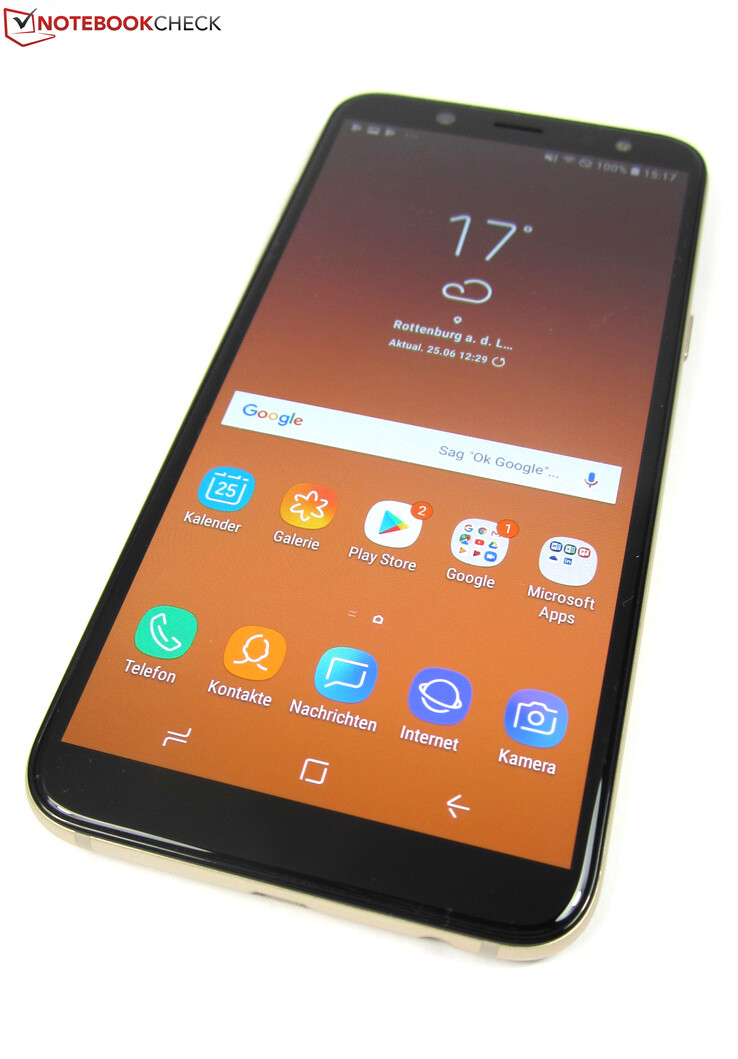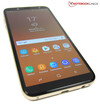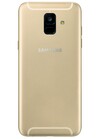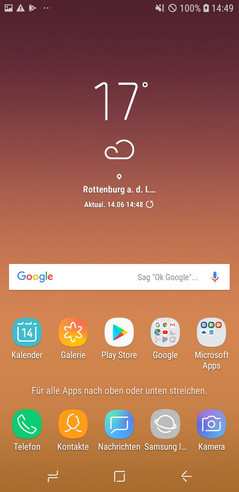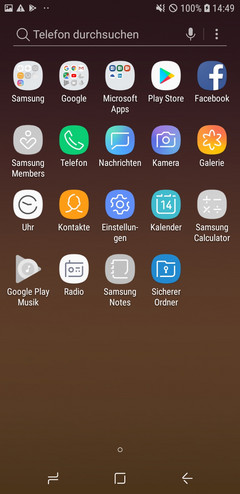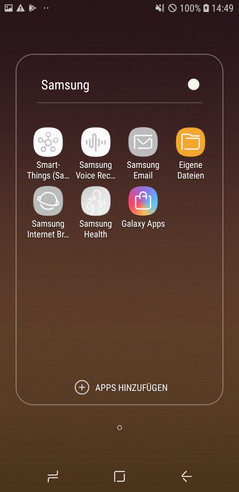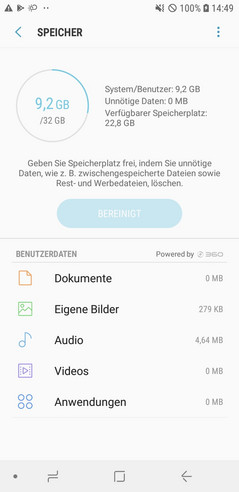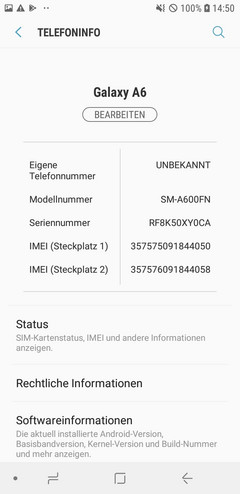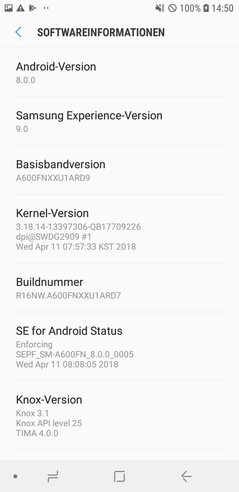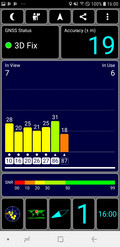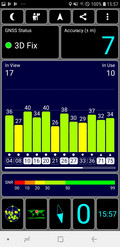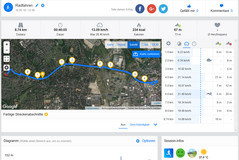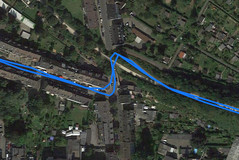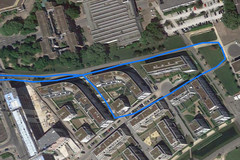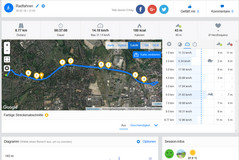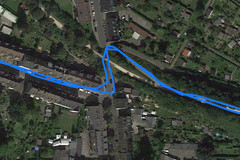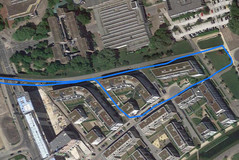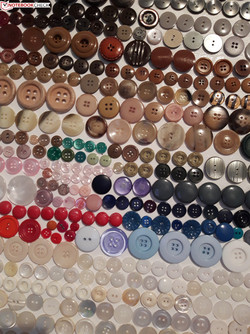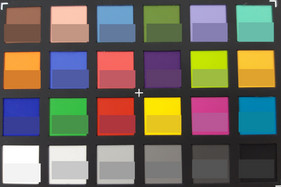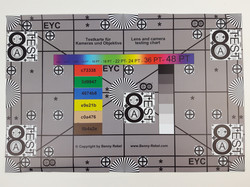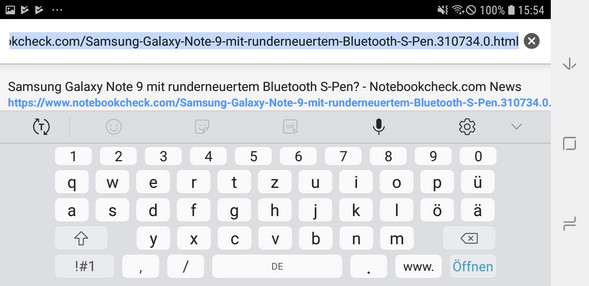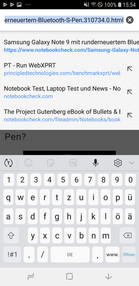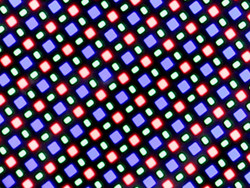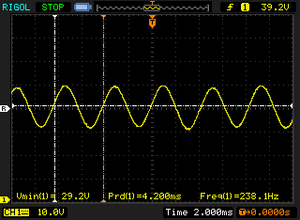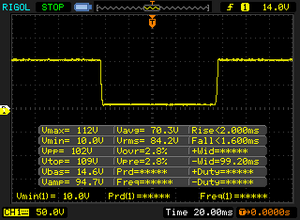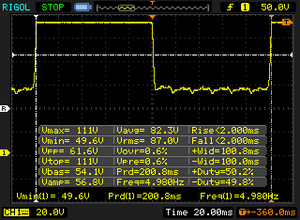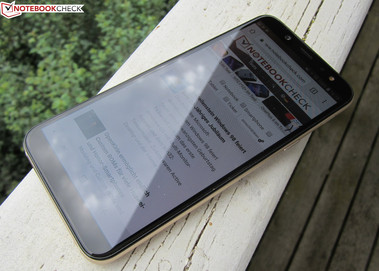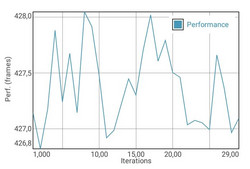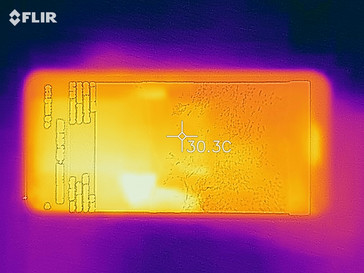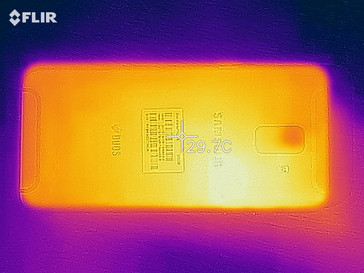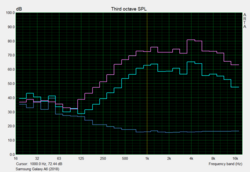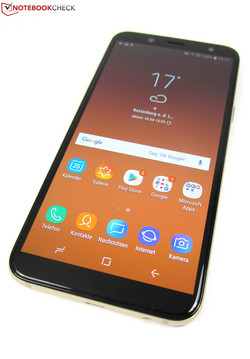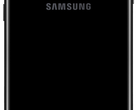Samsung Galaxy A6 (2018) Smartphone Review
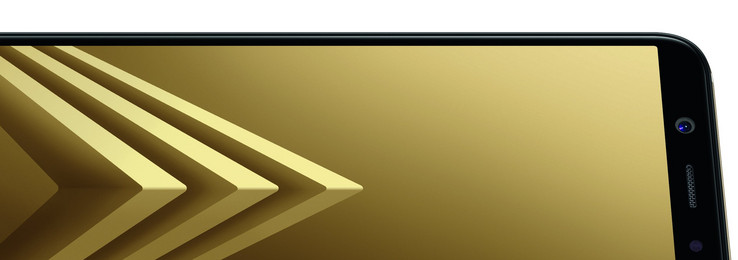
With the Galaxy A6 (2018), Samsung expands its line-up of mid-range smartphones. The 5.6-inch Android smartphone costs 309 Euros (~$362). For this money, you will get a Super AMOLED display with a native resolution of 1480x720, two 16 MP cameras and (optional) dual-SIM functionality. Those who need an even bigger display and a better camera should get the Galaxy A6+ (2018), which Samsung released at the same time as the Galaxy A6 (2018).
According to Samsung, our review device, the Galaxy A6 (2018), is intended for demanding users who want a reliable and stylish smartphone. But what does this mean in practice and who should get this phone? To learn this, we pitted the Galaxy A6 (2018) against other smartphones with a similar price tag, performance and specifications. The competing devices include: The BQ Aquaris X Pro, the Honor 7X, the Motorola Moto G6 Plus and the Xiaomi Redmi 5 Plus. Moreover, our review device will also have to compete with Samsung’s own Galaxy A5 (2017) and Galaxy J7 (2017).
Case - Galaxy A6 (2018) with a slim case
When compared to its “A-series” predecessor, the Galaxy A5 (2017), the Galaxy A6 (2018) features a brand-new case and a modern design. Thanks to its unusual 18.5:9 aspect ratio, the Galaxy A6 (2018) looks significantly slimmer. The bezels have also shrunk considerably. As before, the whole front is protected with a rounded glass sheet, which seamlessly melds with the aluminum sides of the device. All in all, the case is very rigid and very resistant to fingerprints, thanks to its aluminum back.
The fingerprint sensor of the Galaxy A6 (2018) is located on the back below the 16 MP main camera, which protrudes minimally from the case. This is why the smartphone wobbles when you tap on either side of it, especially when it is placed on a flat surface.
The Galaxy A6 (2018) comes in three color schemes: “Gold”, “Black” and “Lavender”. The smartphone is not IP-certified.
Connectivity - Dual-SIM, but no USB-C
We use a dual-SIM version of the Samsung Galaxy A6 (2018) for our review. It has the following model number: SM-A600FN/DS. There are two slots on the left side of the device. The top slot takes a nano-SIM card, while the bottom slot can take a MicroSD card and a second SIM card. Samsung also offers a single-SIM version of the Galaxy A6 (2018) with the model number SM-A600FN.
On paper, the smartphone comes with 32 GB of internal storage, which, in reality, is reduced to 22 GB. However, the internal storage of the smartphone can be expanded with the help of a MicroSD card with a capacity of up to 256 GB. The SD card can be used as internal storage (after formatting), which means that not only media files but also applications can be stored on the SD card.
The USB port of the Galaxy A6 (2018) only supports USB 2.0 protocol, which is no big deal, because this port will mostly be used for charging the device and not for transferring huge amounts of data. In addition, it also supports USB OTG. What is definitely out of date is the Micro USB connector. The Galaxy A5 (2017), the Galaxy J7 (2017) and the Xiaomi Redmi 5 Plus also use the same connector. That a USB Type-C port is no longer a rarity in mid-range smartphones can be seen in such devices as the BQ Aquaris X Pro and the Motorola Moto G6 Plus.
Software - Samsung smartphone with up-to-date Android (8.0)
The Galaxy A6 (2018) comes with the current version of Android (8.0 Oreo). The manufacturer uses a proprietary launcher (Samsung Experience 9.0), which does not differ very much from stock Android. Those who are familiar with stock Android will have no problem acclimatizing to Samsung’s launcher. The security patches date back to April 1, which means that they are still quite current (this review was written at the end of June).
Communication and GPS
The Samsung Galaxy A6 (2018) supports Category 6 LTE, NFC, wireless standards 802.11 a/b/g/n and Bluetooth 4.2. This means that the Galaxy A6 (2018) offers many communications options. That being said, it lacks support for more high-end communications features such as 802.11 ac and Bluetooth 5.0. The Wi-Fi performance is not great, either: Even though the smartphone operates in both the 2.4 GHz and 5 GHz spectral bands, it is noticeably slower than the rest of the competition in our Wi-Fi tests. In combination with our reference-grade router Linksys EA8500, the Galaxy A6 (2018) achieves 123 Mb/s at best, which is only enough to beat the Xiaomi Redmi 5 Plus. The Motorola Moto G6 Plus is almost three times faster. Even other mid-range Samsung smartphones such as the Galaxy A5 (2017) and the Galaxy J7 (2017) leave the Galaxy A6 (2018) in the dust when it comes to Wi-Fi performance.
For geo-location, the Galaxy A6 (2018) relies on GPS, GLONASS and BeiDou. The device struggles to pinpoint the user’s location indoors. This is because 1): it takes a lot of time until the smartphone establishes a satellite connection and 2): it has a margin of error of 19 meters, which is not a very good result. However, outdoors, the smartphone works very differently: Here it determines your location very fast and has a margin of error of only seven meters.
In order to determine how accurate our review device is when it comes to geo-location, we take it with us on a bike ride. During this ride, we are also accompanied by the professional navigator Garmin Edge 500. At the end of our nine-kilometer ride, the Galaxy A6 (2018) and the Garmin Edge 500 deviate from each other by 30 meters. Here the Galaxy A6 (2018) and the Garmin Edge 500 deliver almost identical results.
Telephony and Call Quality
In addition to its MicroSD card slot, the Samsung Galaxy A6 (2018) also has two nano-SIM card slots. With two SIM cards, you can keep your business contacts on one SIM card and your private contacts on the other, or you can use one SIM card for phone calls and the other for Internet browsing. It is very practical that you can assign different functions, such as phone calls, notifications or mobile Internet access, to different SIM cards in the settings menu.
The phone app resembles the standard Android app and after it is launched the classic dial pad shows up. In addition, there are two tabs, one for recent calls and the other for contacts. The third tab called “places” helps you find places of interest in your immediate surroundings. In this tab, you can see and call local service providers, businesses and enterprises.
The call quality of the Galaxy A6 (2018) is pretty good. However, voices sound somewhat muffled on both ends. Thanks to Samsung’s noise reduction feature, it is easy to understand what people on both sides are saying even in noisy environments. We did not observe any abnormalities during our phone calls.
Cameras - two 16 MP shooters, poor low-light performance
Both the front camera and the rear camera have the same resolution (16 MP). Photos have a resolution of 4608x3456 when shot with the 4:3 aspect ratio. However, photos shot with the 16:9 aspect ratio have a resolution of 3264x2448 (8 MP). Video can be recorded in Full HD at 30 FPS.
The 16 MP rear camera comes from Samsung and is designated as the Sensor-ID SLSI_S5K2P6. It features phase-detection autofocus and an LED flash for illuminating dark scenes. However, it forgoes optical image stabilization.
If you swipe left in the camera app you will get access to the following eight picture modes: Auto, Pro, Panorama, Continuous shot, HDR, Night, Sports and Sound & shot. In Pro mode, you can adjust important camera settings manually. ISO sensitivity can also be adjusted (800 is the maximum value here). The maximum value for the ISO sensitivity could be a bit higher, because the f/1.7 aperture lets in more than enough light for that, at least on paper. The front-facing camera has only three modes: Selfie, Group selfie and Sound & shot.
In daylight, the main camera of the Samsung Galaxy A6 (2018) shoots well-detailed photos with natural-looking colors. Because of its limited dynamic range, the camera quickly reaches its limits in scenes with a lot of highlights, as can be seen in Image 1. In particular, bright areas become really overblown (look at the clouds in front of the light blue sky in Image 1). Therefore, the image quality is quite poor. Photos just do not look very realistic (take a look at Image 2). In low-light conditions, the pictures lose a whole lot of detail and look blurry even without zooming in.
Under controlled lighting conditions, we use the X-Rite ColorChecker Passport to examine more closely the color reproduction of the Galaxy A6 (2018). We also use our test chart to evaluate sharpness.
Like with many other smartphones, the colors of the Samsung Galaxy A6 (2018) are oversaturated. However, the colors are not completely overblown. They still seem natural. The center of the chart is rendered very sharply. The camera also has no problems with color bleeding or color aberration. However, sharpness is lower at the edges than in the center (except in the upper left corner).
Accessories and Warranty - optional additional warranty for Samsung smartphones
The box includes: a modular (5V, 1.55A) charger, a USB cable (USB-A to Micro USB Type-B), headphones, a SIM card removal tool and a quick-start guide. Further accessories such as the Wallet Cover (€29.90/$34.99), a Dual Layer Cover (€19.90/$23.29) and an external battery pack can be purchased in Samsung’s online store.
The Samsung Galaxy A6 (2018) comes with a 24-month manufacturer’s warranty. Samsung also offers additional warranty options such as Mobile Care. Please see our Guarantees, Return policies and Warranties FAQ for country-specific information.
Input Devices & Handling
The AMOLED screen of the Samsung Galaxy A6 (2018) is silky-smooth. It can register up to five fingers at the same time and responds promptly to inputs, no matter from which side of the screen they come. The plastic buttons feel rather cheap: Not because they are made from low-grade plastic, but because they are prone to wobbling.
The fingerprint sensor exhibits no problems. It is located on the back of the device under the main camera and therefore is easy to reach when you are using the smartphone with one hand. The fingerprint reader works very reliably and also supports gesture functionality (it can be used to pull down or dismiss the notification shade). Face recognition also works well. It can be used to unlock the smartphone or to sign into apps. Other features include: One-handed mode, Quick Launch (double-tap the power button to launch the camera) and Multi-Window Mode, which allows several apps to be displayed on the screen at the same time.
Samsung Keyboard (version 3.0) serves as the default keyboard. It features predictive word suggestions and speech-to-text functionality. As per usual, you can download your favorite keyboard from the Google Play Store at any time.
Display - the crowning jewel of the Galaxy A6
The Galaxy A6 (2018) comes with a Super AMOLED display with an unusual aspect ratio of 18.5:9 and a resolution of 1480x720. This is too low for a mid-range device, because these days most mid-range smartphones have a display with a Full HD resolution (BQ Aquaris X Pro, Samsung Galaxy A5 (2017), Samsung Galaxy J7 (2017)) or higher (Motorola Moto G6 Plus, Xiaomi Redmi 5 Plus).
When it comes to the picture quality, the display of the Galaxy A6 (2018) checks all the boxes. With an average brightness of 458.9 cd/m², the smartphone is bright enough to be usable outside. The display brightness is controlled automatically to prevent people from getting blinded in low-light environments. In our APL50 test pattern, which consists of evenly distributed black and white squares, the brightness is even higher (507 cd/m²). The display can only reach 298 cd/m² with the light sensor disabled.
The display has a brightness distribution of 93% and scores major points with its theoretically infinite contrast ratio (an “infinite” contrast ratio is a typical feature of OLED displays). Unlike with LCD screens, each pixel in OLED displays can be turned off on an individual basis, which means that the OLED screens can produce “true” blacks. The display also does well in other areas. With Delta E values of 2.6 for the colors and 1.6 for the grayscale, the display delivers ideal picture quality. The differences in color cannot be perceived with the naked eye. The color temperature of 6356 K is also close to the ideal value (6500 K).
One flaw: The Galaxy A6 (2018) uses PWM for brightness control. Because the pulse width modulation operates at a very low frequency of 238.1 Hz, it can cause susceptible individuals to experience headaches or eye strain.
| |||||||||||||||||||||||||
Brightness Distribution: 93 %
Center on Battery: 453 cd/m²
Contrast: ∞:1 (Black: 0 cd/m²)
ΔE ColorChecker Calman: 2.6 | ∀{0.5-29.43 Ø4.77}
ΔE Greyscale Calman: 1.6 | ∀{0.09-98 Ø5}
95.5% sRGB (Calman 2D)
Gamma: 2.07
CCT: 6356 K
| Samsung Galaxy A6 2018 Super AMOLED, 1480x720, 5.6" | Samsung Galaxy A5 2017 Super AMOLED, 1920x1080, 5.2" | Samsung Galaxy J7 2017 Super AMOLED, 1920x1080, 5.5" | BQ Aquaris X Pro IPS, 1920x1080, 5.2" | Motorola Moto G6 Plus IPS, 2160x1080, 5.9" | Xiaomi Redmi 5 Plus IPS, 2160x1080, 6" | |
|---|---|---|---|---|---|---|
| Screen | 26% | 9% | -131% | 27% | -15% | |
| Brightness middle (cd/m²) | 453 | 539 19% | 454 0% | 458 1% | 761 68% | 620 37% |
| Brightness (cd/m²) | 459 | 542 18% | 463 1% | 473 3% | 723 58% | 612 33% |
| Brightness Distribution (%) | 93 | 93 0% | 86 -8% | 88 -5% | 90 -3% | 96 3% |
| Black Level * (cd/m²) | 0.51 | 0.69 | 0.57 | |||
| Colorchecker dE 2000 * | 2.6 | 1.6 38% | 2 23% | 7.1 -173% | 2.4 8% | 3.46 -33% |
| Colorchecker dE 2000 max. * | 9.2 | 2.6 72% | 5.3 42% | 14.5 -58% | 5.2 43% | 7.88 14% |
| Greyscale dE 2000 * | 1.6 | 1.5 6% | 1.7 -6% | 10.5 -556% | 1.8 -13% | 3.9 -144% |
| Gamma | 2.07 106% | 2.28 96% | 2.1 105% | 2.28 96% | 2.21 100% | 2.073 106% |
| CCT | 6356 102% | 6422 101% | 6394 102% | 8951 73% | 6312 103% | 7230 90% |
| Contrast (:1) | 898 | 1103 | 1088 |
* ... smaller is better
Screen Flickering / PWM (Pulse-Width Modulation)
| Screen flickering / PWM detected | 238.1 Hz | ||
The display backlight flickers at 238.1 Hz (worst case, e.g., utilizing PWM) . The frequency of 238.1 Hz is relatively low, so sensitive users will likely notice flickering and experience eyestrain at the stated brightness setting and below. In comparison: 53 % of all tested devices do not use PWM to dim the display. If PWM was detected, an average of 8081 (minimum: 5 - maximum: 343500) Hz was measured. | |||
Display Response Times
| ↔ Response Time Black to White | ||
|---|---|---|
| 3.6 ms ... rise ↗ and fall ↘ combined | ↗ 2 ms rise | |
| ↘ 1.6 ms fall | ||
| The screen shows very fast response rates in our tests and should be very well suited for fast-paced gaming. In comparison, all tested devices range from 0.1 (minimum) to 240 (maximum) ms. » 14 % of all devices are better. This means that the measured response time is better than the average of all tested devices (20.2 ms). | ||
| ↔ Response Time 50% Grey to 80% Grey | ||
| 4 ms ... rise ↗ and fall ↘ combined | ↗ 2 ms rise | |
| ↘ 2 ms fall | ||
| The screen shows very fast response rates in our tests and should be very well suited for fast-paced gaming. In comparison, all tested devices range from 0.165 (minimum) to 636 (maximum) ms. » 14 % of all devices are better. This means that the measured response time is better than the average of all tested devices (31.6 ms). | ||
There are several color profiles in the display settings. The “Adaptive Display” profile is selected by default. It serves to optimize the color space, saturation and sharpness. There are also the “AMOLED cinema” profile and the “AMOLED photo” profile. These two profiles are meant to improve the reproduction of videos and photos. Finally, there is also the “Basic” profile, which does not utilize any optimization. We use a spectrophotometer and SpectraCal's CalMAN software to examine these color profiles more closely.
The result is clear: The “AMOLED cinema”, “AMOLED photo” and “Basic” profiles perform as well as the “Adaptive Display” profile.
Thanks to the high maximum brightness and good contrast ratio, the Super AMOLED display of the Samsung Galaxy A6 (2018) is readable even in direct sunlight. However, reflections can occasionally hamper readability.
The display does very well when it comes to the viewing angles. It starts to suffer from typical OLED color shimmering at viewing angles of 45 degrees or wider. However, this effect is not especially pronounced and does not prove to be annoying at all.
Performance - powerful enough for everyday use
The Galaxy A6 (2018) comes with the Samsung Exynos 7870 SoC, 3 GB of RAM and the ARM Mali-T830 MP1 graphics unit. This SoC for mid-range smartphones was first released in February 2016. This means that it is pretty old.
However, this SoC is not obsolete even in 2018. The smartphone is powerful enough to compete with other mid-range devices. The Galaxy A6 (2018) actually performs worse than its predecessor, the Galaxy A5 (2017). Our review device does not perform very well overall. All other competing devices, with the exception of the Galaxy J7 (2017), are significantly faster. All in all, the Galaxy A6 (2018) offers enough performance for daily tasks, but it quickly reaches its limits if you try to use it for gaming.
| AnTuTu v7 - Total Score (sort by value) | |
| Samsung Galaxy A6 2018 | |
| Samsung Galaxy J7 2017 | |
| BQ Aquaris X Pro | |
| Motorola Moto G6 Plus | |
| Xiaomi Redmi 5 Plus | |
| Average Samsung Exynos 7870 Octa (61794 - 62758, n=4) | |
We did not encounter any problems when surfing the web with the preinstalled Chrome browser. HTML5 websites, like Ouigo (letsplay.ouigo.com), work well most of the time. However, the smartphone does not do very well in the browser benchmarks. It takes last place in both JetStream 1.1 and Octane 2.0. In Kraken 1.1, it finishes next to last. It manages to land a spot in the middle only in WebXPRT 2015.
| JetStream 1.1 - Total Score | |
| Samsung Galaxy A5 2017 (Samsung Browser (Chrome 44)) | |
| Motorola Moto G6 Plus (Chrome 66) | |
| BQ Aquaris X Pro (Chrome 59.0.3071.125) | |
| Samsung Galaxy J7 2017 (Samsung Browser 5.4) | |
| Average Samsung Exynos 7870 Octa (20.8 - 26.4, n=8) | |
| Xiaomi Redmi 5 Plus (Chrome 66) | |
| Samsung Galaxy A6 2018 (Chrome 64.0.3282.137) | |
| Octane V2 - Total Score | |
| Average of class Smartphone (2228 - 126661, n=194, last 2 years) | |
| Samsung Galaxy A5 2017 (Samsung Browser (Chrome 44)) | |
| Motorola Moto G6 Plus (Chrome 66) | |
| Samsung Galaxy J7 2017 (Samsung Browser 5.4) | |
| BQ Aquaris X Pro (Chrome 59.0.3071.125) | |
| Xiaomi Redmi 5 Plus (Chrome 66) | |
| Average Samsung Exynos 7870 Octa (3721 - 4968, n=8) | |
| Samsung Galaxy A6 2018 (Chrome 64.0.3282.137) | |
| Mozilla Kraken 1.1 - Total | |
| Samsung Galaxy A6 2018 (Chrome 64.0.3282.137) | |
| Xiaomi Redmi 5 Plus (Chrome 66) | |
| Motorola Moto G6 Plus (Chrome 66) | |
| Average Samsung Exynos 7870 Octa (6784 - 11916, n=8) | |
| BQ Aquaris X Pro (Chrome 59.0.3071.125) | |
| Samsung Galaxy J7 2017 (Samsung Browser 5.4) | |
| Samsung Galaxy A5 2017 (Samsung Browser (Chrome 44)) | |
| Average of class Smartphone (257 - 28190, n=154, last 2 years) | |
| WebXPRT 2015 - Overall | |
| Xiaomi Redmi 5 Plus (Chrome 66) | |
| Motorola Moto G6 Plus (Chrome 66) | |
| Samsung Galaxy A5 2017 (Samsung Browser (Chrome 44)) | |
| Samsung Galaxy A6 2018 (Chrome 64.0.3282.137) | |
| BQ Aquaris X Pro (Chrome 59.0.3071.125) | |
| Samsung Galaxy J7 2017 (Samsung Browser 5.4) | |
| Average Samsung Exynos 7870 Octa (64 - 91, n=8) | |
* ... smaller is better
The Galaxy A6 (2018) features 32 GB of eMMC flash memory. It is not very fast, but it is faster than the memory in both the Galaxy A5 (2017) and the Galaxy J7 (2017). However, it cannot keep up with much higher read and write rates of other competing devices. The Motorola Moto G6 Plus and the Xiaomi Redmi 5 Plus have the fastest memory here.
We use our reference-grade MicroSD card, Toshiba Exceria Pro M501 (maximum read speed: 270 MB/s; maximum write speed: 150 MB/s), to test the performance of the built-in MicroSD card reader. Here the Galaxy A6 (2018) does better than most of the other competing devices. It even manages to come very close to the frontrunner, the Motorola Moto G6 Plus.
| Samsung Galaxy A6 2018 | Samsung Galaxy A5 2017 | Samsung Galaxy J7 2017 | BQ Aquaris X Pro | Motorola Moto G6 Plus | Xiaomi Redmi 5 Plus | Average 32 GB eMMC Flash | Average of class Smartphone | |
|---|---|---|---|---|---|---|---|---|
| AndroBench 3-5 | -9% | -10% | 18% | 130% | 51% | 28% | 1739% | |
| Sequential Read 256KB (MB/s) | 208.4 | 182 -13% | 198.5 -5% | 270.5 30% | 286.6 38% | 270 30% | 242 ? 16% | 2235 ? 972% |
| Sequential Write 256KB (MB/s) | 100.6 | 77.1 -23% | 53 -47% | 139.6 39% | 216.1 115% | 194.5 93% | 100.5 ? 0% | 1871 ? 1760% |
| Random Read 4KB (MB/s) | 24.54 | 22.41 -9% | 25.86 5% | 37.97 55% | 58.4 138% | 79.5 224% | 43.1 ? 76% | 297 ? 1110% |
| Random Write 4KB (MB/s) | 10.68 | 12.13 14% | 10.54 -1% | 12.07 13% | 62.8 488% | 7.1 -34% | 22.3 ? 109% | 343 ? 3112% |
| Sequential Read 256KB SDCard (MB/s) | 81.4 ? | 73.7 ? -9% | 76.1 ? -7% | 78.7 ? -3% | 83.7 ? 3% | 84.4 4% | 71.8 ? -12% | |
| Sequential Write 256KB SDCard (MB/s) | 65.7 ? | 56 ? -15% | 63.9 ? -3% | 49.77 ? -24% | 62.1 ? -5% | 59.5 -9% | 52.9 ? -19% |
Games - the Galaxy A6 2018 is not fit for gaming
The Samsung Galaxy A6 (2018) is not intended for gaming per se, but it can certainly be used to play video games: The motion sensor works well and the speaker is positioned very practically. It is located on the right side of the device. This is why it does not get covered even when the smartphone is used in landscape mode.
The Galaxy A6 (2018) can only run older or non-demanding games smoothly. If you want to play modern titles, then you will have to reduce graphics settings considerably. There are a few exceptions: Arena of Valor manages to achieve 26 FPS on the high settings. However, the game suffers from severe stuttering. PUBG Mobile is unplayable on any settings. At 13 frames per second, it is a veritable lag-fest. We cannot imagine anyone who would enjoy playing this game at such a low frame rate. We use GameBench to record frame rates in the games.
| Arena of Valor | |||
| Settings | Value | ||
| high HD | 26 fps | ||
| PUBG Mobile | |||
| Settings | Value | ||
| Balanced | 13 fps | ||
Emissions
Temperature
Under load, the Samsung Galaxy A6 (2018) reaches a maximum surface temperature of 29.3 °C (84.7 °F). When idle, the surface temperatures hover around the 25 °C (77 °F) mark. This means that the smartphone has almost the same temperature profile when it is under load as when it is idle. This is why there is no throttling under the hood, as the GFXBench benchmark shows. The Galaxy A6 (2018) manages to maintain its full performance in the T-Rex section of the GFXBench benchmark as well as in the more demanding Manhattan section.
(+) The maximum temperature on the upper side is 29.3 °C / 85 F, compared to the average of 35.2 °C / 95 F, ranging from 21.9 to 247 °C for the class Smartphone.
(+) The bottom heats up to a maximum of 28.2 °C / 83 F, compared to the average of 34 °C / 93 F
(+) In idle usage, the average temperature for the upper side is 25.6 °C / 78 F, compared to the device average of 32.9 °C / 91 F.
Speakers
The speaker is very well positioned – it is located on the right side above the power button. Therefore, it does not get covered when you use the smartphone in either portrait or landscape mode or when the smartphone lies on a table (Samsung certainly put a lot of thought into this). It delivers a passable sound quality that is good enough for listening to music or watching video. The highs and other frequencies are quite well represented. For a better listening experience, you should get a pair of headphones with a more balanced sound reproduction.
Samsung Galaxy A6 2018 audio analysis
(+) | speakers can play relatively loud (87 dB)
Bass 100 - 315 Hz
(-) | nearly no bass - on average 26.5% lower than median
(±) | linearity of bass is average (7.6% delta to prev. frequency)
Mids 400 - 2000 Hz
(+) | balanced mids - only 2.8% away from median
(+) | mids are linear (5.5% delta to prev. frequency)
Highs 2 - 16 kHz
(+) | balanced highs - only 3.5% away from median
(+) | highs are linear (6.2% delta to prev. frequency)
Overall 100 - 16.000 Hz
(±) | linearity of overall sound is average (17.4% difference to median)
Compared to same class
» 12% of all tested devices in this class were better, 8% similar, 80% worse
» The best had a delta of 11%, average was 35%, worst was 134%
Compared to all devices tested
» 32% of all tested devices were better, 8% similar, 59% worse
» The best had a delta of 4%, average was 24%, worst was 134%
Samsung Galaxy A5 2017 audio analysis
(+) | speakers can play relatively loud (83 dB)
Bass 100 - 315 Hz
(-) | nearly no bass - on average 15.5% lower than median
(±) | linearity of bass is average (9.1% delta to prev. frequency)
Mids 400 - 2000 Hz
(±) | higher mids - on average 9.4% higher than median
(±) | linearity of mids is average (7.6% delta to prev. frequency)
Highs 2 - 16 kHz
(±) | higher highs - on average 5% higher than median
(±) | linearity of highs is average (7.6% delta to prev. frequency)
Overall 100 - 16.000 Hz
(±) | linearity of overall sound is average (23.6% difference to median)
Compared to same class
» 53% of all tested devices in this class were better, 8% similar, 39% worse
» The best had a delta of 11%, average was 35%, worst was 134%
Compared to all devices tested
» 70% of all tested devices were better, 6% similar, 24% worse
» The best had a delta of 4%, average was 24%, worst was 134%
Xiaomi Redmi 5 Plus audio analysis
(+) | speakers can play relatively loud (86.9 dB)
Bass 100 - 315 Hz
(-) | nearly no bass - on average 27.3% lower than median
(±) | linearity of bass is average (11.2% delta to prev. frequency)
Mids 400 - 2000 Hz
(+) | balanced mids - only 3.4% away from median
(+) | mids are linear (3.8% delta to prev. frequency)
Highs 2 - 16 kHz
(+) | balanced highs - only 4.5% away from median
(+) | highs are linear (4.8% delta to prev. frequency)
Overall 100 - 16.000 Hz
(±) | linearity of overall sound is average (19.8% difference to median)
Compared to same class
» 31% of all tested devices in this class were better, 8% similar, 61% worse
» The best had a delta of 11%, average was 35%, worst was 134%
Compared to all devices tested
» 50% of all tested devices were better, 7% similar, 43% worse
» The best had a delta of 4%, average was 24%, worst was 134%
Battery Life - 3000-mAh battery lasts for a long time
Energy Consumption
The Samsung Galaxy A6 (2018) is very energy-efficient. When idle, it has an average power draw of 1.26 watts. Under medium load, it draws 2.87 watts. Under full load, the power consumption reaches 4.82 watts, which is a very modest result. This is good news for the battery life.
Unfortunately, the smartphone takes a very long time to fully charge, because it does not support fast charging. The Galaxy A6 (2018) takes 2 h 45 m to fully charge with the included (5V, 1.55A) charger.
| Off / Standby | |
| Idle | |
| Load |
|
Key:
min: | |
| Samsung Galaxy A6 2018 3000 mAh | Samsung Galaxy A5 2017 3000 mAh | Samsung Galaxy J7 2017 3600 mAh | BQ Aquaris X Pro 3100 mAh | Motorola Moto G6 Plus 3200 mAh | Xiaomi Redmi 5 Plus 4000 mAh | Average Samsung Exynos 7870 Octa | Average of class Smartphone | |
|---|---|---|---|---|---|---|---|---|
| Power Consumption | 8% | 31% | -28% | -13% | -73% | -18% | -64% | |
| Idle Minimum * (Watt) | 0.81 | 0.64 21% | 0.39 52% | 0.67 17% | 0.5 38% | 0.7 14% | 0.71 ? 12% | 0.847 ? -5% |
| Idle Average * (Watt) | 1.26 | 1.36 -8% | 1.06 16% | 1.7 -35% | 1.78 -41% | 2.8 -122% | 1.909 ? -52% | 1.446 ? -15% |
| Idle Maximum * (Watt) | 1.3 | 1.4 -8% | 1.08 17% | 1.78 -37% | 1.81 -39% | 3.4 -162% | 1.995 ? -53% | 1.63 ? -25% |
| Load Average * (Watt) | 2.87 | 2.53 12% | 1.82 37% | 4.42 -54% | 3.3 -15% | 4.2 -46% | 3.02 ? -5% | 6.95 ? -142% |
| Load Maximum * (Watt) | 4.82 | 3.63 25% | 3.21 33% | 6.3 -31% | 5.14 -7% | 7.2 -49% | 4.42 ? 8% | 11.3 ? -134% |
* ... smaller is better
Battery Life
Thanks to its low power draw, the Samsung Galaxy A6 (2018) delivers great battery life. In our Wi-Fi test, with the display brightness set to 150 cd/m², the smartphone achieves a battery run time of over 10 hours. In our video test, which is conducted under similar conditions, the Galaxy A6 (2018) lasts for more than 14 hours. Due to their lower energy consumption, both the Samsung Galaxy A5 (2017) and the Galaxy J7 (2017) manage to achieve longer battery life. However, the competing devices from BQ and Motorola also offer similar battery life.
| Samsung Galaxy A6 2018 3000 mAh | Samsung Galaxy A5 2017 3000 mAh | Samsung Galaxy J7 2017 3600 mAh | BQ Aquaris X Pro 3100 mAh | Motorola Moto G6 Plus 3200 mAh | Xiaomi Redmi 5 Plus 4000 mAh | |
|---|---|---|---|---|---|---|
| Battery runtime | 40% | 43% | -2% | 7% | -18% | |
| Reader / Idle (h) | 26.9 | 40.3 50% | 32.5 21% | 30.7 14% | 30.8 14% | |
| H.264 (h) | 14.5 | 16.4 13% | 18.3 26% | 10.7 -26% | 9 -38% | |
| WiFi v1.3 (h) | 10.1 | 14.1 40% | 15.1 50% | 12.2 21% | 11.7 16% | 8.3 -18% |
| Load (h) | 5 | 7.8 56% | 8.8 76% | 4.2 -16% | 6.7 34% |
Pros
Cons
Verdict - Advantages and disadvantages cancel each other out
With the Galaxy A6 (2018), Samsung offers a good mid-range smartphone, which has to compete with capable competitors. It has a number of advantages, but it also has just as many disadvantages.
The Samsung Galaxy A6 (2018) is a good mid-range smartphone, which performs worse than its predecessor, the Samsung Galaxy A5 (2017), in a number of areas.
The Galaxy A6 (2018) scores a lot of points with its good design, bright and well-calibrated display and long battery life. It also features up-to-date Android (8.0 Oreo), real dual-SIM functionality and expandable storage (the internal storage can be expanded with the help of a MicroSD card). The camera module does not perform very well: The 16 PM main camera produces “okay” photos in daylight but struggles in low-light conditions.
The 309-Euro (~$362) Galaxy A6 (2018) comes with a few disadvantages. The Micro-USB port is way out of date. Other drawbacks include: slow Wi-Fi, the lack of IP certification and long charging times. With its Exynos 7870 SoC and ARM Mali T830 MP1 graphics unit, the Galaxy A6 (2018) offers more than enough performance for day-to-day use. However, it is nowhere near powerful enough for gaming. All in all, the predecessor, the Samsung Galaxy A5 (2017), is a better choice, if you do not need dual-SIM functionality. It offers more performance at a lower price.
Samsung Galaxy A6 2018
- 06/28/2018 v6 (old)
Manuel Masiero


